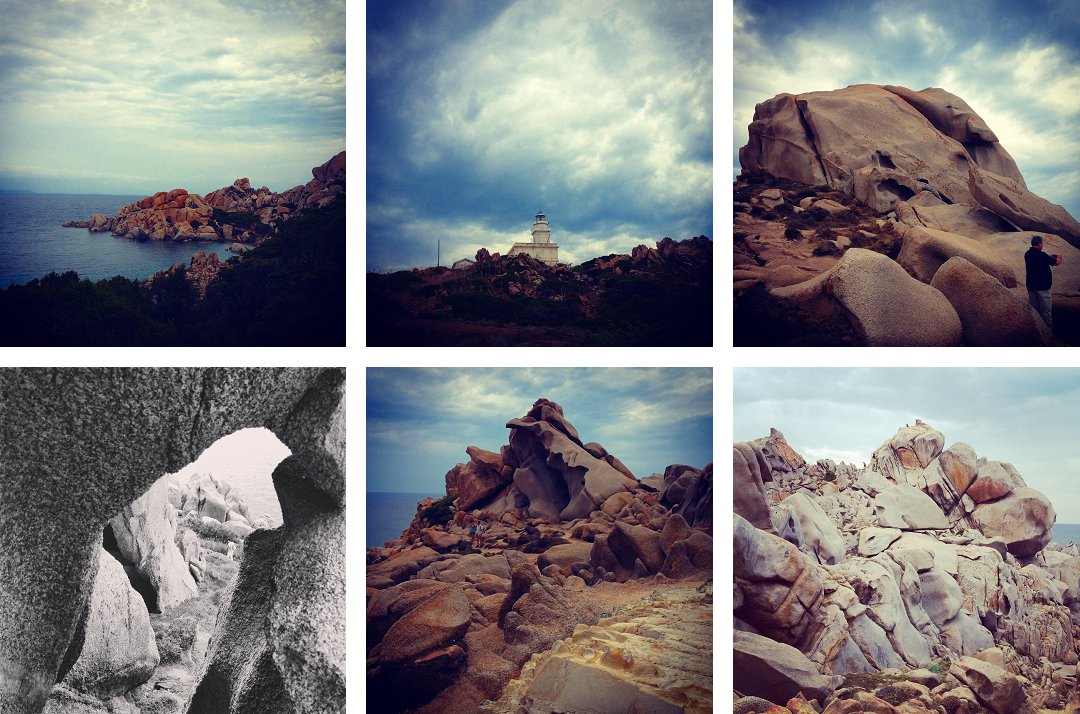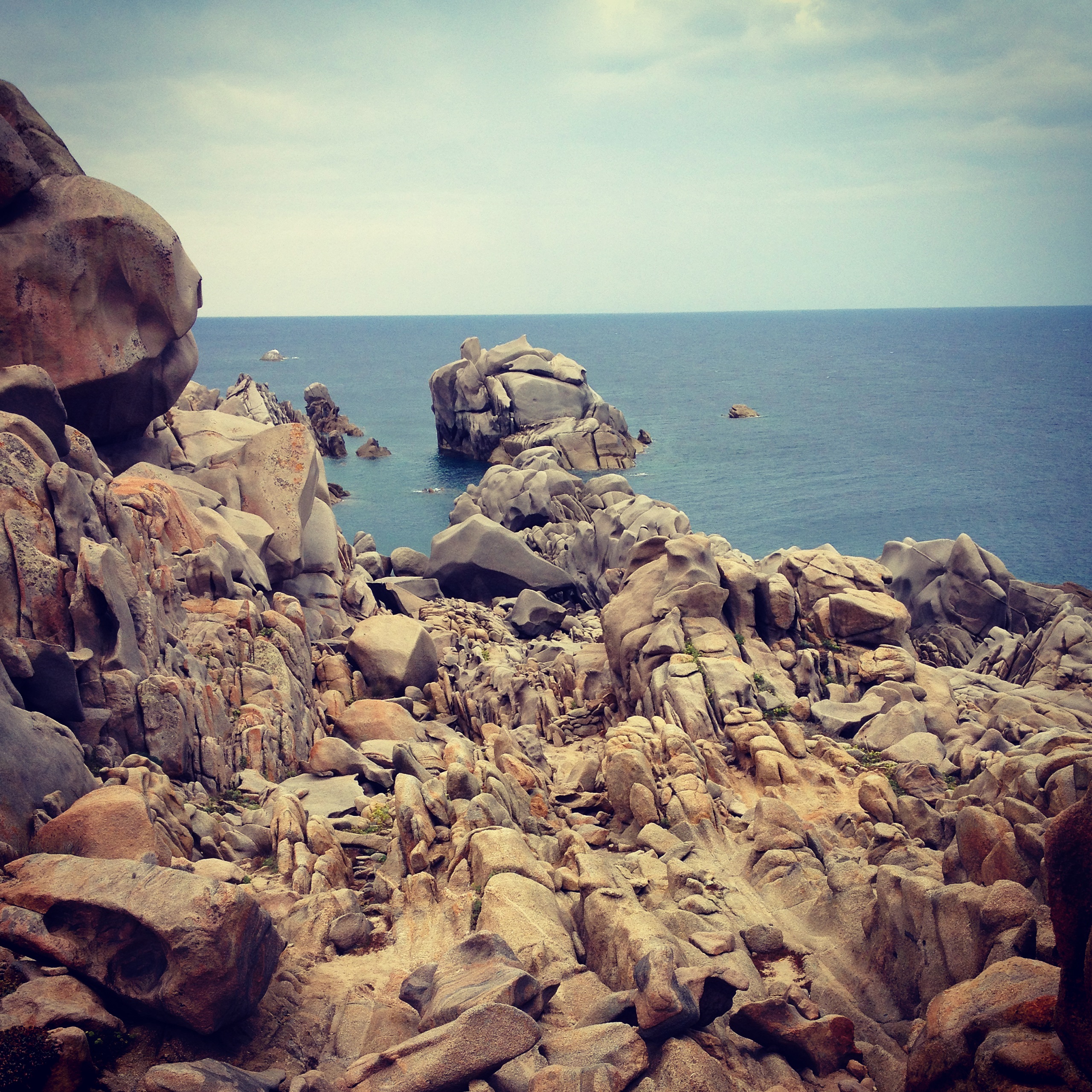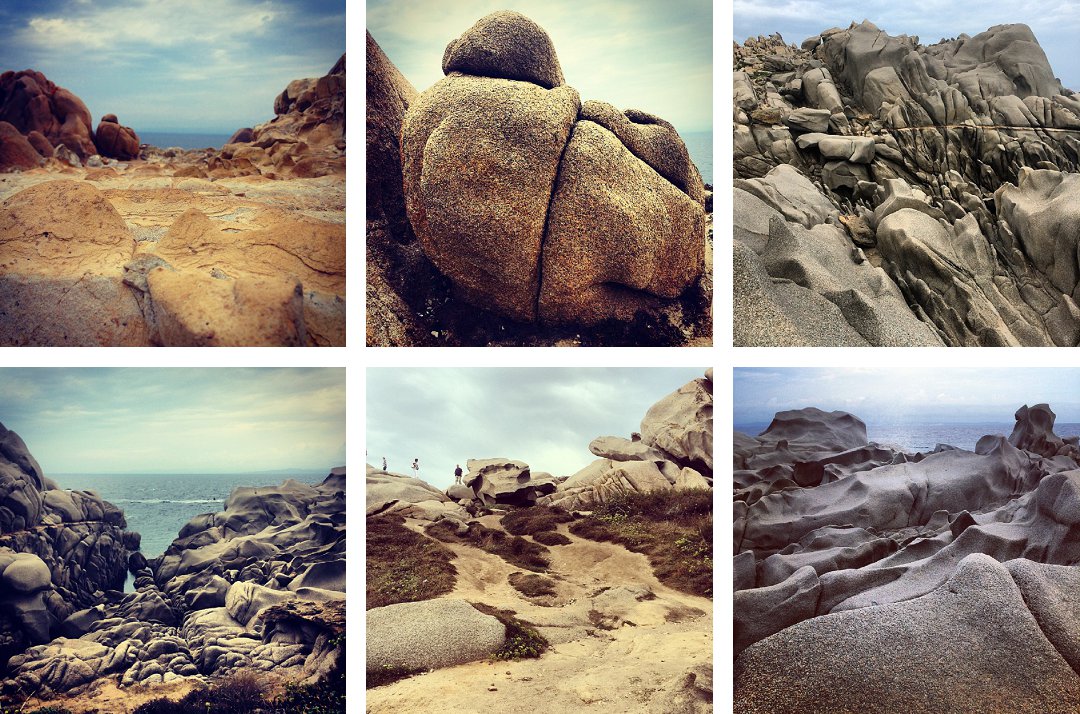Capo Testa is located in northern Sardinia and is a wild and pretty remote part of the island. For thousands of years, the powerful wind over the Mediterranean has shaped Capo Testa, into an unreal world of lunar rock formations. Smoothed from the sea breeze, the huge, imposing rocks have been contorted into curious formations, almost as if they were formed by mythical giants, making this place a really mystifying sight and ensuring that it very popular with visitors, who also come to swim in the crystal clear waters.
As the closest Sardinian shore to Rome, the peninsula where Capo Testa is located, was at one point used for mining granite, by the Romans, who set up a small town around the mines, extracting large amounts of the stone for many of the buildings in the Italian capital. The caves where the stone was quarried were last used as a source of building materials in the early 20th century. The rocky, granite peninsula, which is attached to Sardinia’s mainland by an isthmus, is only about ten kilometers (6.2 miles) across. So, pull on a pair of sturdy shoes with a strong grip and hike around the eroded rocks to admire the formations smoothed and shaped by the wind. When you’re here you also realise how close you are Corsica, as the shoreline of the French island is clearly visible, even on a day like the one we visited, which was grey and at times, misty.
Sardinia really is an island of stark contrasts, from the bustling and cosmopolitan city of Cagliari to the more sedate northern port town of Alghero. From the remote, deserted western beaches with huge sand dunes, to the glitz and glamour of the Costa Smerelda. And from beaches of golden sands, which stretch fro miles and slope gently into azure blue waters, to the other-wordly rocks of Capo Testa. The northern coast of Sardinia is like no other coast we have ever visited – and this was our first experience of this area…

The sheer scale and size of the rocks can be easily seen, above – look at the people clambering over the tops of the rocks!


Capo Testa is easy to get to by car, but be aware – parking is at a premium and you will get ticketed if you’re not obeying the parking rules. It can also be very cold if you’re out of season, as we were, as the wind does whip in from that strait, so make sure you have more than a T-shirt to wear. Also, and I can’t stress this enough – FOOTWEAR! Flip flops will not see you across those rocks – they can be slippery and they are riveted with cracks and dips and loose stones. Sturdy trainers, all the way. Or, as a lot of people were wearing – hiking boots.
